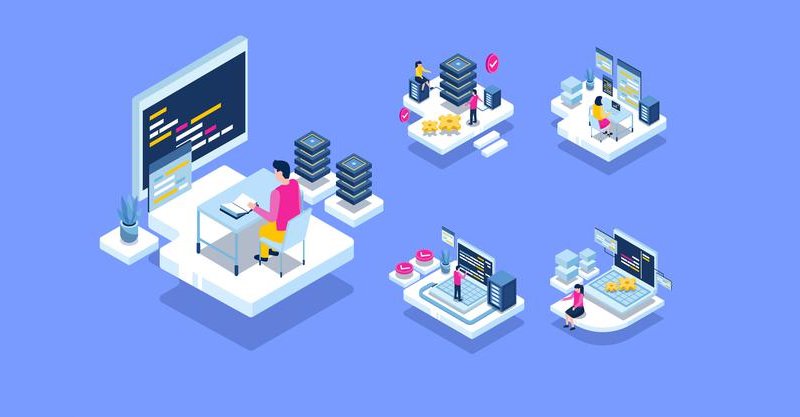
A business runs because of its customers, who want to be valued and understood. They want their names taken correctly, they want their transaction history to be kept accurately, their preferences be maintained and other related information. Using MDM, or master data management, a business organization can build a unified view of the customer which holds a detailed single and holistic account of a person as an individual rather than a mismanaged, redundant or jumbled abstract of data.
To begin with, if the master data set is not synchronized across the company, a customer’s name in one department could be spelled differently in another, and this could create two separate identities of the same customer just because of a misspelled name. This will create an ununified view and would not serve the purpose of the business or the customer’s needs.
- The name matters
Often, the unified view of a customer is also referred to as “single view of the customer” and also as a “360 view of the customer” in business terminology. However, there are problems with the usage of these terms as they may mean different things. ‘Single view’ is a limited view as customer scope differs between the different departments. At the same time, a 360 view is two-dimensional while the customers are not.
With accurate maintenance of customer information, performed holistically in one place, the facts and the different facets of the relationship can be knowledge commonly shared by all the departments of a business. While different views exist, they still remain aligned. The customer, however, remains as an interactive and personalized aggregate of multidimensional characteristics leading to common inferences between departments .
- Unified view benefits
A unified view can make a business instantly access data on all customer contact points and views. All the customer’s interactions, which include purchases, phone calls, chats, emails and social media behavior are added to other customer data points such as address, credit card numbers and buying preferences. Once all the above data is centralized and integrated it supports more effective and meaningful interactions with customers. It lets them feel as if the business sees them as real people, making them feel appreciated.
The American Express Global Customer Service Barometer, conducted in 2014, deduced that 74% of customers reveal that they spent more time with a business because of a history of customer service experiences that are positive. Happy customers can be ensured by maximizing customer experience, and these experiences transform them to loyal customers. Customer satisfaction is a by-product that results naturally from combining information to form a unified customer view. The businesses that embrace it profit from its utilization.
The major benefits to be had once you have a unified view of your customers are:
- Improved customer behavior and lifetime value insights.
A unified view will help you understand the lifetime value of a customer by acquisition source, and enables you to adjust acquisition spends efficiently for better results. You can evaluate the engagement patterns for customers to drive up-sell in a more relevant way. You should also be able to identify cross-sell opportunities and identify the customers at a risk of lapse and thus re-engage them appropriately before they are lost to your business.
- Improved customer segmentation and analysis.
A customer’s unified view always offers more powerful opportunities towards analyzing their purchasing behavior and identifying the points of inflection where a shopping journeys’ trajectory can be changed. This will result in a more relevant customer experience, especially during important times when the customers are extra-sensitive or tone-deaf to the offers and subsequent messaging or communications.
- Improved results using the existing technological assets.
Marketers face a lot of operational challenges in the pursuit of using customer data to its proper potential. While IT departments may be extremely caught up in executing data warehousing successfully in addition to hygiene projects, a unified view of a customer can offer you the best of all worlds. As your business or brand retains control over the data, the marketing team gets quick access to the data it needs to devise and create campaigns as they are being undertaken, and at the same time IT can remain focused on its strengths and do what it does best.
Some other advantages are as follows:
- Running more targeted marketing campaigns across channels for micro-segments to identify the next best action, derived from context.
- Tracking customers across brands and channels, reducing churn by establishment of re-connections.
- Leveraging customer insights based on localized in-store assortments, dynamic pricing and customized promotions.
- Responding proactively to life events like ‘relocating’ or ‘getting engaged’, using targeted communications on relevant services and products.
- Providing the right type of recommendations on new products based on current customer location, maybe near a store or an aisle.
The Consumer Experience Impact Report of 2011 inferred that 89% of consumers changed companies after experiencing poor service. At the same time a survey conducted by Gartner concluded that about 89% of businesses believed that by 2016 customer experience will be their primary driving factor. To remain in the competition businesses not only need to deliver a top-notch service or product but also provide outstanding customer interactions. If all the required customer information is in check, the follow through can be consistent, accurate, comprehensive and quick.
The acquisition of customer information must be symbiotic, whereby businesses must provide some incentive of similar value to obtain customer information in exchange. If both parties feel satisfied from the transaction then it is a successful exchange. As a result, businesses are under an obligation to protect customer privacy and also disclose when the data needs to be shared. Those businesses that earn and retain the trust of their customers, and enjoy long-term effective relationships with them.
Taking necessary steps towards data unification will help you apply revenue-boosting customer insights across all departments of your business or brand. And with the changing world around us, having a unified view of the customer will allow you to maintain proximity with your customers, and respond to their ever-changing needs on a real-time basis by reaching them with timely and useful experiences.


